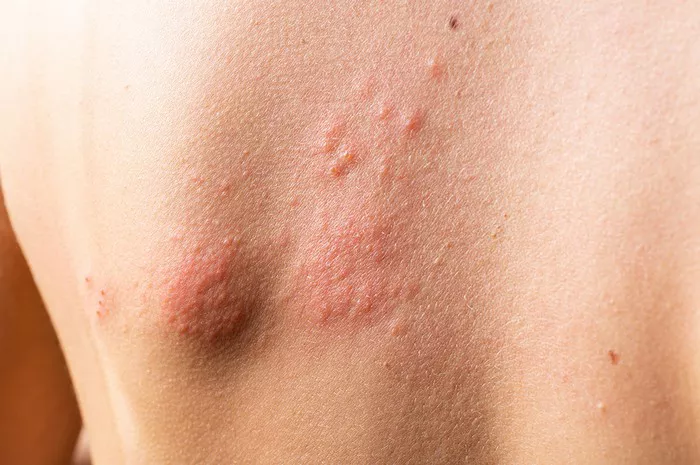Hidradenitis Suppurativa (HS) is a chronic inflammatory skin condition characterized by painful nodules, abscesses, and tunnels that form in areas where skin rubs together, such as the armpits, groin, buttocks, and under the breasts. While the primary symptoms of HS are well-documented, there remains ongoing debate and investigation into its potential link with hair loss. In this article, we delve into the intricate relationship between HS and hair loss, exploring the underlying mechanisms, clinical evidence, and potential implications for patients.
Understanding Hidradenitis Suppurativa
Before delving into the question of whether HS causes hair loss, it is crucial to grasp the fundamentals of this debilitating condition. HS typically begins after puberty and tends to persist for years, causing significant discomfort and impairing quality of life for those affected. While the exact cause of HS remains elusive, it is believed to involve a combination of genetic predisposition, immune dysfunction, and environmental factors.
The hallmark of HS is the formation of painful, recurrent abscesses and nodules in the affected areas. These lesions can rupture, leading to the formation of sinus tracts and scarring. The inflammatory process underlying HS is complex and involves various immune cells and inflammatory mediators.
The Hair Follicle Connection
To understand the potential link between HS and hair loss, it is essential to appreciate the role of hair follicles in the pathogenesis of HS. Hair follicles are complex structures that reside within the skin and undergo cycles of growth, regression, and rest. In HS, the inflammatory process primarily affects the hair follicles, leading to follicular occlusion, rupture, and subsequent inflammation.
The inflammatory milieu within and around the hair follicles in HS contributes to the formation of abscesses, sinus tracts, and scarring. This inflammatory cascade disrupts the normal hair growth cycle and can ultimately lead to hair loss in affected areas. Moreover, the chronic inflammation associated with HS may damage the hair follicles’ stem cells, further impairing their ability to regenerate.
Clinical Evidence and Observations
While the association between HS and hair loss is intuitive based on the pathophysiology of the condition, clinical evidence supporting this link is somewhat limited. Nevertheless, numerous studies and case reports have documented hair loss in patients with HS, particularly in areas affected by active disease and scarring.
A retrospective study published in the Journal of the American Academy of Dermatology examined the prevalence of hair loss in patients with HS. The researchers found that nearly 40% of patients with HS experienced some degree of hair loss in affected areas. Furthermore, the severity of hair loss correlated with the severity of HS, suggesting a direct relationship between the two.
In addition to clinical studies, dermatologists have observed hair loss as a common complication of advanced HS. The scarring and tissue destruction associated with chronic inflammation can irreversibly damage hair follicles, leading to permanent hair loss in affected areas. Moreover, the psychological distress caused by HS can exacerbate hair loss through mechanisms such as stress-induced alopecia.
Mechanisms of Hair Loss in HS
Several mechanisms may contribute to hair loss in patients with HS. Firstly, the chronic inflammation and fibrosis within and around the hair follicles can directly damage the follicular structure, leading to follicular miniaturization and eventual hair loss. Secondly, the mechanical trauma resulting from recurrent abscess formation and sinus tract formation can disrupt the hair follicles’ anchoring to the surrounding dermis, predisposing them to shedding. Finally, the scarring and fibrosis associated with advanced HS can create a hostile environment for hair follicle regeneration, leading to permanent hair loss.
Implications for Patient Care
The recognition of hair loss as a potential complication of HS has important implications for patient care. Dermatologists and healthcare providers caring for patients with HS should be vigilant for signs of hair loss, particularly in areas affected by active disease and scarring. Early identification and intervention may help mitigate the progression of hair loss and improve patient outcomes.
Treatment strategies for hair loss in HS may include topical and systemic therapies aimed at reducing inflammation, promoting wound healing, and stimulating hair follicle regeneration. Additionally, surgical interventions such as follicular unit transplantation may be considered in cases of permanent hair loss and scarring.
Furthermore, addressing the psychosocial impact of hair loss in patients with HS is paramount. Hair loss can significantly impact self-esteem, body image, and quality of life, exacerbating the already substantial burden of HS. Therefore, a multidisciplinary approach involving dermatologists, psychologists, and support groups may be necessary to address the holistic needs of patients with HS and hair loss.
Conclusion
In conclusion, while the association between HS and hair loss is complex and multifactorial, there is compelling evidence to suggest a link between the two. The chronic inflammation, follicular occlusion, and scarring characteristic of HS can disrupt the normal hair growth cycle and lead to hair loss in affected areas. Recognizing and addressing hair loss as a potential complication of HS is essential for optimizing patient care and improving outcomes. Further research into the mechanisms underlying hair loss in HS and the efficacy of therapeutic interventions is warranted to better understand and manage this challenging aspect of the disease.

























